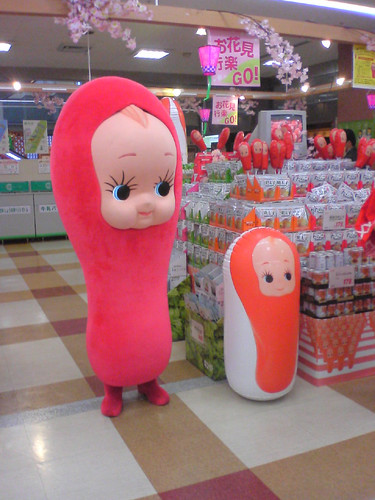Imagine stepping into a museum and encountering a worn-out pair of sneakers, a faded denim jacket, or a chipped ceramic mug. You might raise an eyebrow, wondering, “Why is this here?” The answer, perhaps surprisingly, is that these seemingly ordinary objects hold the potential to become treasures, relics reflecting the lives and times of past generations. They represent the evolution of culture, technology, and even fashion. Like a time capsule, these humble items whisper stories of the past, revealing glimpses into the lives of those who came before us. This is the curious world of “everyday object collecting” – a fascinating exploration of the ordinary items we often overlook, waiting to become the museum exhibits of tomorrow.

Image: www.msn.com
Each object, however mundane it may seem now, holds a unique connection to its history. A simple wooden rocking horse, once cradled by a child’s exuberant laughter, might encapsulate a bygone era of childhood innocence. A worn-out baseball mitt, bearing the scars of countless games, might speak volumes about the thrill of competition and the enduring power of sportsmanship. Even an outdated smartphone captures a moment frozen in technological time, a reminder of the rapid evolution of communication. They are more than just inanimate objects; they are fragments of history, waiting to be dissected and understood.
The Rise of the Everyday Object
The fascination with everyday objects in museums is not a new phenomenon. Throughout history, museums have showcased artifacts that represent human ingenuity and cultural evolution. Think of ancient tools used in agriculture, intricate pottery, or the elegant textiles woven by skilled hands. These were the everyday objects of their respective eras, showcasing the resourcefulness and artistry of their creators.
In the 20th century, however, the landscape of everyday objects shifted dramatically. The rapid advancement of technology brought forth a deluge of new inventions, from radios and televisions to computers and smartphones. These innovations, while seemingly ordinary at the time of their creation, forever transformed the way we live, work, and interact with the world.
Museums, ever-evolving entities, began to recognize the value of these “modern relics.” Exhibitions began to feature not just ancient swords and pottery, but also vintage computers and iconic toys. The focus shifted to exploring the social and cultural impact of these objects, revealing how they shaped our lives and continue to influence the world around us.
Curating the Ordinary
The rise of everyday object collecting has led to a renewed appreciation for the seemingly mundane. Collectors and curators alike are embarking on fascinating journeys, unearthing objects from thrift stores, flea markets, and even their own attics. They are looking for items that tell stories – objects that capture a time, a place, or a personal experience.
The criteria for selecting an everyday object for a museum can be surprisingly broad. Here are a few key factors that often determine the worthiness of an object:
- Historical Significance: Does the object represent a significant event or period in history? A vintage newspaper capturing the first moon landing or a protest poster from the Civil Rights Movement are examples of objects with profound historical significance.
- Cultural Impact: Does the object reflect a specific culture or subculture? A record player from the 1960s, a vintage skateboard, or a pair of bell-bottom jeans can all shed light on popular culture trends of their time.
- Technological Advancement: Does the object represent a major breakthrough in technology? An early model of a personal computer, a floppy disk, or a dial-up modem are examples of objects that encapsulate the evolution of technology.
- Personal Connection: Does the object hold a profound personal story? A childhood teddy bear, a worn-out wedding ring, or a handwritten letter can evoke powerful emotions and provide a glimpse into someone’s life journey.
The Museum of Tomorrow
It’s fascinating to envision the museums of the future. Imagine walking through an exhibit showcasing the latest smartphones, augmented reality headsets, and self-driving car prototypes. The objects we hold in our hands today, seemingly insignificant in the scheme of things, will be the historical artifacts of tomorrow. They will tell stories of how we navigated the digital age, the challenges we faced, and the triumphs we achieved.
The value of these everyday objects lies not just in their material form, but also in their ability to connect us to past generations and inspire future ones. They remind us that the “ordinary” holds extraordinary potential, and that even the simplest things can have a profound impact on our lives and the course of history.

Image: thatbelongsinamuseum.wordpress.com
Expert Insights
Dr. Elizabeth Smith, a renowned curator specializing in contemporary objects, emphasizes the importance of context when curating everyday items. “It’s not just about the physical object itself,” she explains. “It’s about understanding the social, cultural, and technological context in which it was created and used.” She notes that by examining how these objects interacted with people and society, museums can provide a deeper understanding of the history we are living through.
Collectors, driven by a passion for the common and a deep appreciation for the past, play a crucial role in preserving everyday objects. They are the unsung heroes of historical preservation, ensuring that objects that might have been discarded or forgotten are preserved for future generations.
It Belongs In A Museum… Eventually
It Begins With You
As you go about your day, take a moment to appreciate the ordinary objects around you. Consider the stories they hold. The worn-out coffee mug you use every morning, the vintage record player in your attic, or the faded photograph on your desk – each object is a testament to a time and a place, a potential window into the past.
Perhaps you have an object that could someday find its place in a museum. After all, the ordinary objects of today are the potential treasures of tomorrow.
Don’t underestimate the power of the seemingly mundane. The everyday objects we often overlook hold stories waiting to be discovered. They are fragments of history, reminders of the past, and a glimpse into the future.





